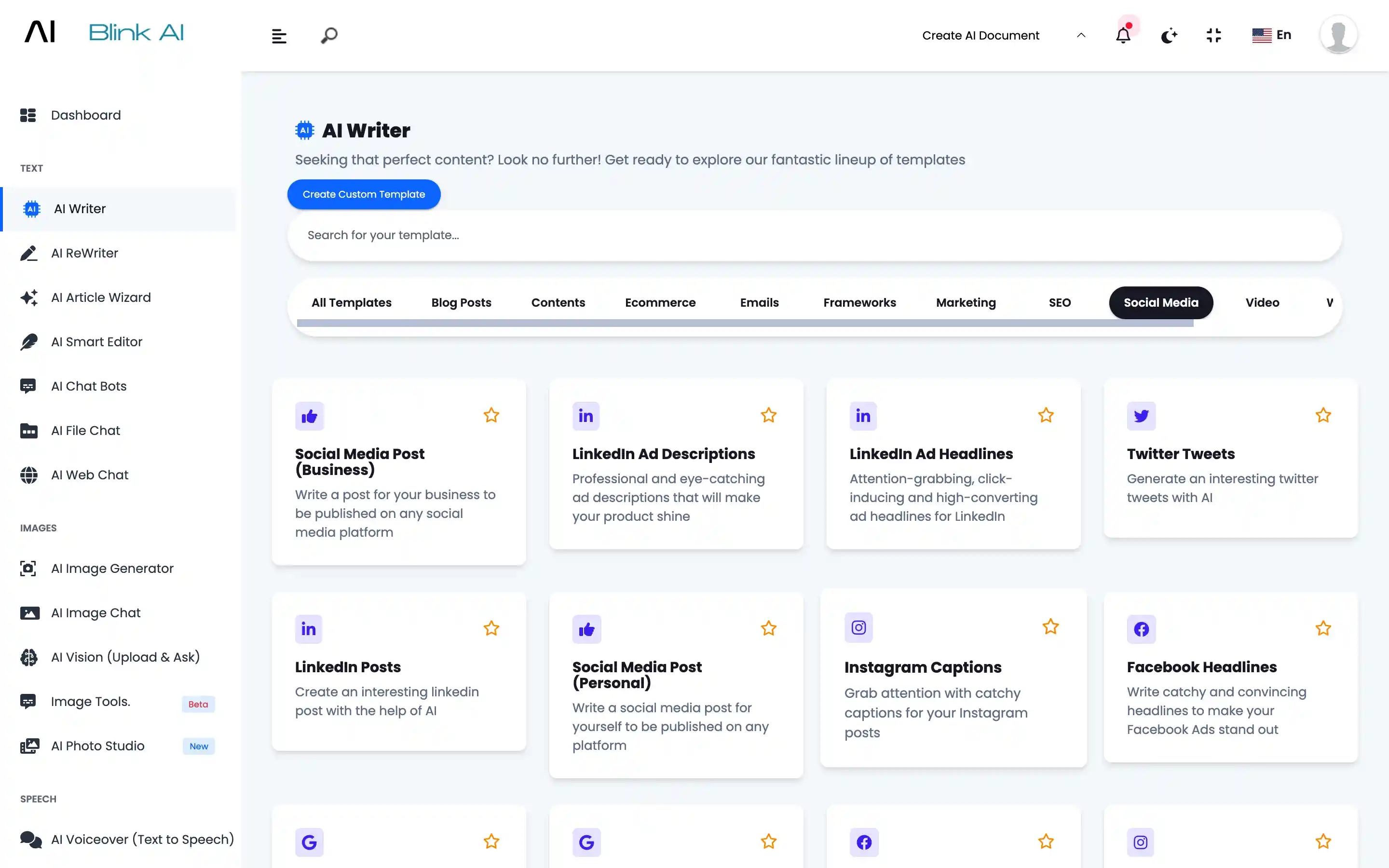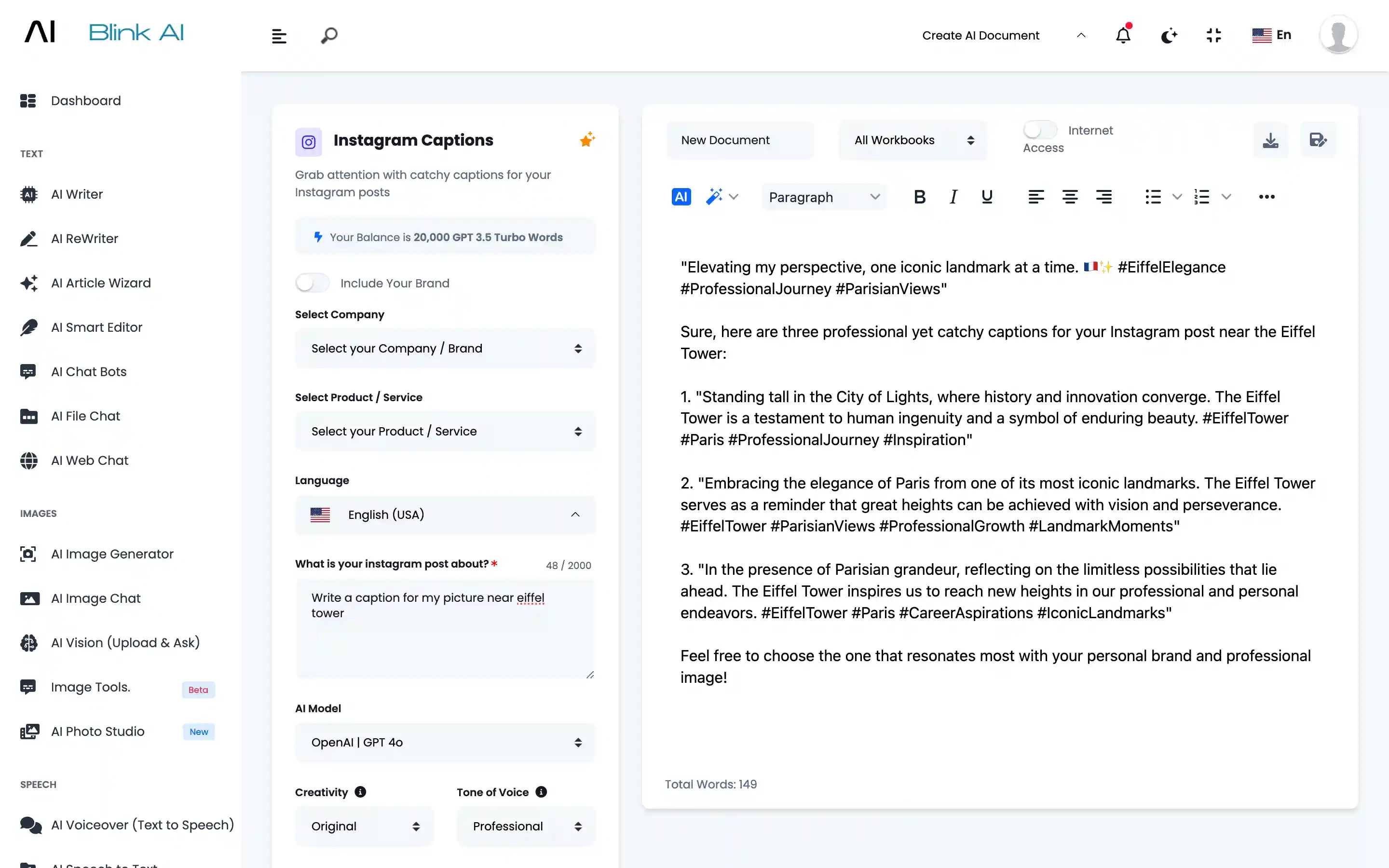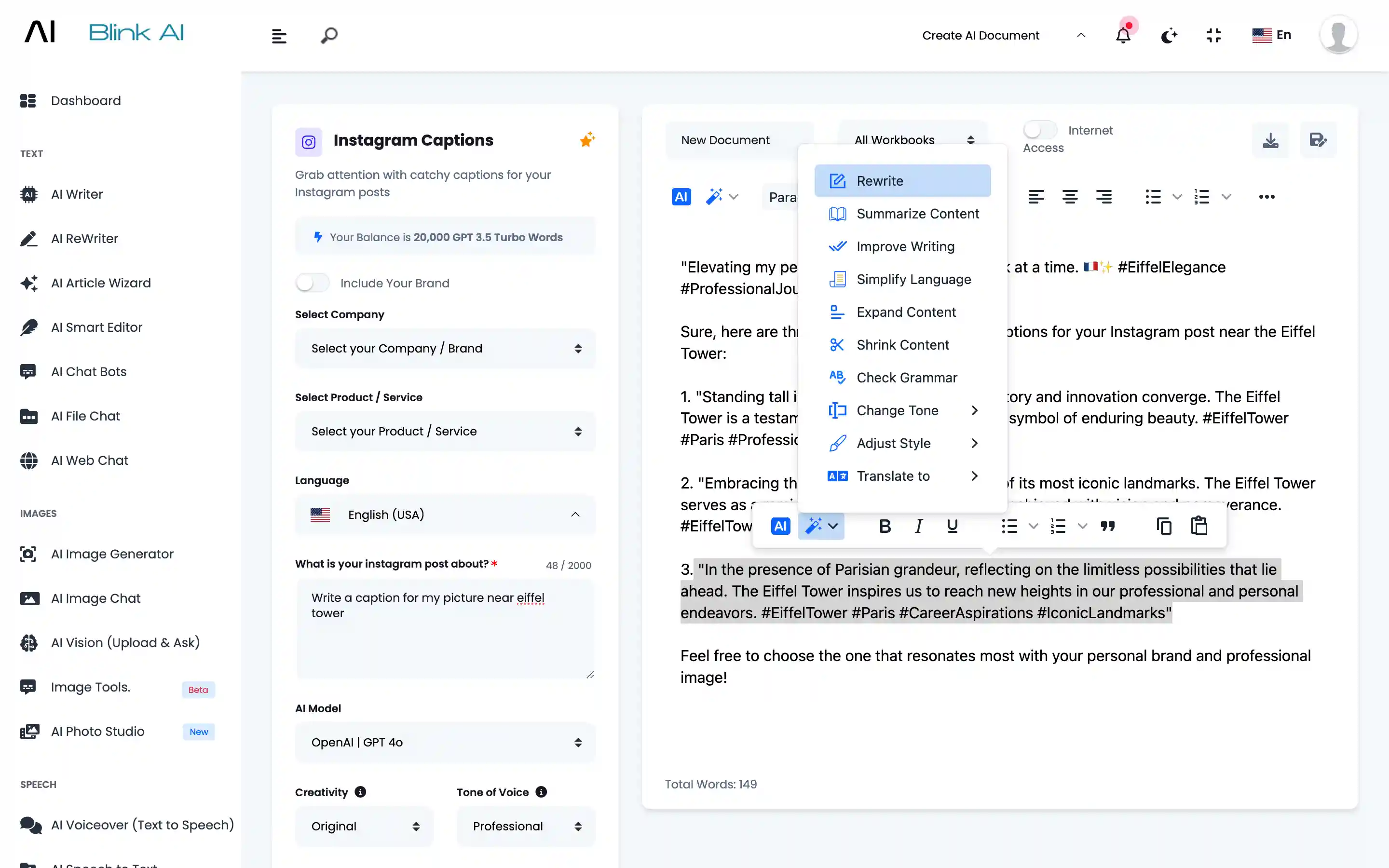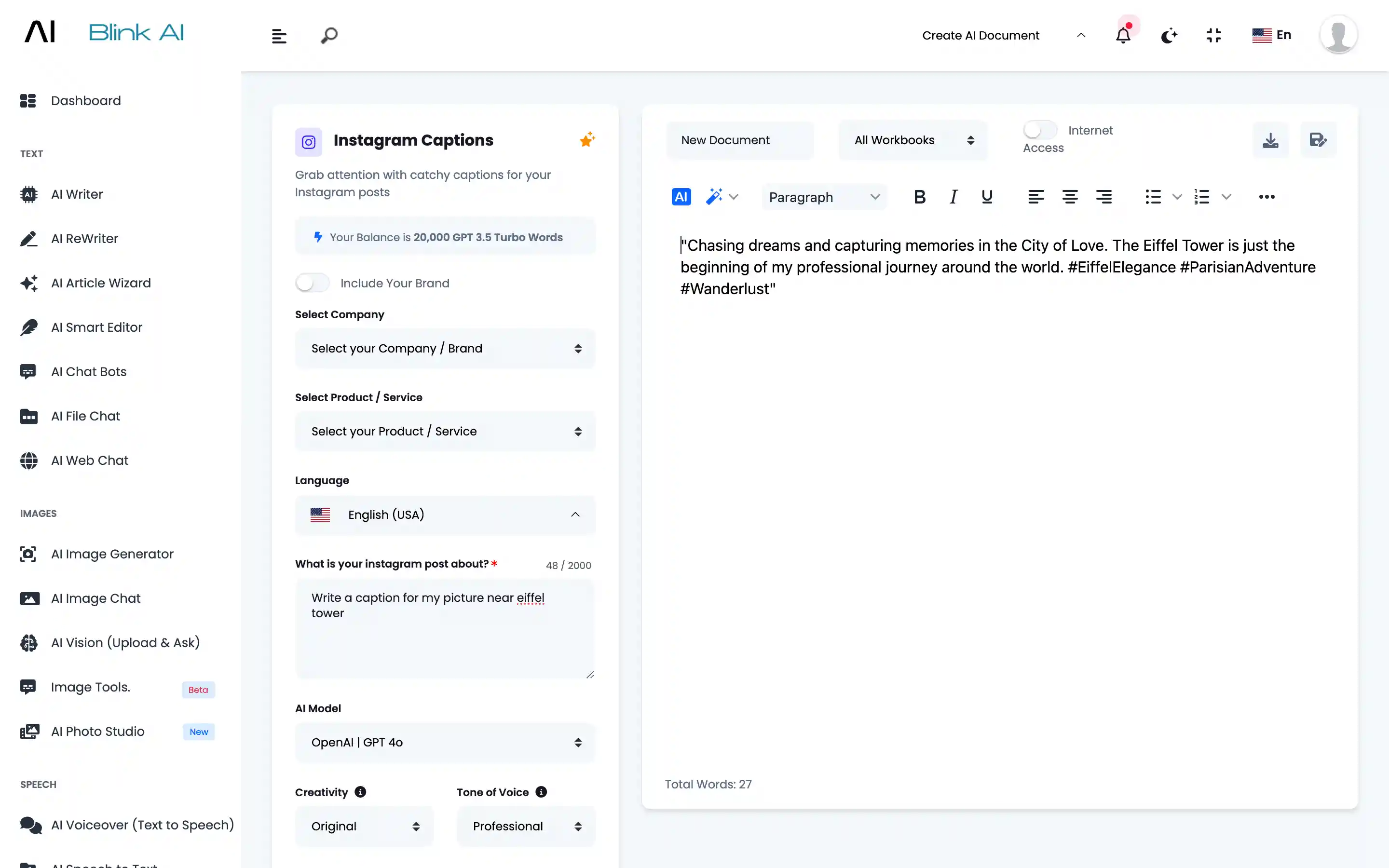Meet, BlinkAI – AI Content Generator: Text, Image, Video, Voice & Code
Meta Description
One platform to generate all AI contents





AI Meta Description
Write SEO-optimized meta description based on a description
Blink AI's Meta Description
About Meta Description
Writing SEO-optimized meta descriptions is a critical aspect of on-page SEO that can significantly impact your click-through rates and overall search engine performance. Here’s a detailed guide on how to write effective meta descriptions based on your content description: What is a Meta Description?: A meta description is a brief summary of a web page's content that appears below the URL in search engine results. It provides searchers with an overview of what to expect from the page. Why is it Important?: An optimized meta description can attract users to click on your link, improving your page’s visibility and click-through rate (CTR). It also helps search engines understand the content of your page. Summarize Key Points: Identify the main topics and key points of your content. The meta description should capture the essence of your page. Highlight Unique Value: Determine what makes your content unique or particularly valuable to users. This unique selling point should be reflected in the meta description. Optimal Length: Aim for 150-160 characters. This length is typically displayed fully in search results without being cut off. Clear and Direct: Write in clear, concise language that directly communicates the main idea of the content. Primary Keywords: Include your primary keywords naturally within the meta description. This helps with SEO and makes it clear to searchers what your page is about. Avoid Keyword Stuffing: Don’t overuse keywords. Ensure that the description reads naturally and provides value. Engage the User: Use a call-to-action (CTA) to encourage users to click. Phrases like “Learn more,” “Discover,” “Find out,” or “Get started” can be effective. Address User Intent: Think about what the user is looking for and tailor your CTA to meet that need. Accuracy: Make sure the meta description accurately reflects the content of the page. Misleading descriptions can lead to high bounce rates. Specificity: Be specific about what the user will gain from visiting your page. Mention key points or benefits clearly. Avoid Duplicates: Each page on your website should have a unique meta description. This helps search engines understand that each page offers distinct content. Tailor for Different Pages: Customize the meta description to fit the specific content and purpose of each page. Monitor Performance: Use tools like Google Search Console to monitor the performance of your meta descriptions. Look at CTR and search rankings. A/B Testing: Experiment with different versions of your meta descriptions to see which ones perform better. Example 1: Blog Post on Healthy Eating Content Description: A comprehensive guide on healthy eating habits, including tips on balanced diets, nutritional advice, and easy-to-make healthy recipes. Meta Description: “Discover how to eat healthier with our comprehensive guide! Get nutritional tips, balanced diet advice, and easy-to-make healthy recipes. Start your journey to better health today!” Example 2: E-commerce Product Page for Running Shoes Content Description: High-quality running shoes designed for comfort and performance, featuring breathable material, cushioned soles, and stylish designs. Meta Description: “Shop our high-quality running shoes for ultimate comfort and performance. Featuring breathable materials and cushioned soles, these stylish shoes are perfect for any runner. Buy now and step up your game!” Example 3: Service Page for a Digital Marketing Agency Content Description: Professional digital marketing services including SEO, social media marketing, content marketing, and PPC advertising to help businesses grow online. Meta Description: “Grow your business with our expert digital marketing services! From SEO and content marketing to social media and PPC, we’ve got you covered. Contact us today for a free consultation!” Writing SEO-optimized meta descriptions involves understanding the content, keeping the description concise and clear, using relevant keywords, crafting compelling CTAs, and ensuring each page has a unique and accurate meta description. By following these steps, you can improve your page’s visibility, attract more clicks, and enhance your overall SEO performance.1. Understand the Purpose of a Meta Description
2. Analyze the Content Description
3. Keep it Concise and Clear
4. Use Relevant Keywords
5. Craft a Compelling CTA
6. Reflect the Content
7. Create Unique Descriptions for Each Page
8. Test and Optimize
Example Meta Descriptions Based on Descriptions
Conclusion
Steps for AI Writing
Start Writing Content in 3 Easy Steps
1
Step 1
AI Writer Section
Go to AI Writer section and select a template
2
Step 2
Details
Provide brief details about your requirement
3
Step 3
Generate
Generate, amend and save content
Discover AI Writer
How To Use Blink AI's AI Writer for Content Creation
Go to AI Writer Section
Choose from 70+ AI Writing Templates or Create your Own Template
Describe
You can provide details like what is the exact requirement. How many outputs you want. Which AI model you want to use.
Generate
Content will be generated based on your input.
Amend
Select the content you want to amend. Click on the Magic Wand to amend Generated Content.
Fresh Output
Fresh output will be generated. You can save it in Workbooks.




